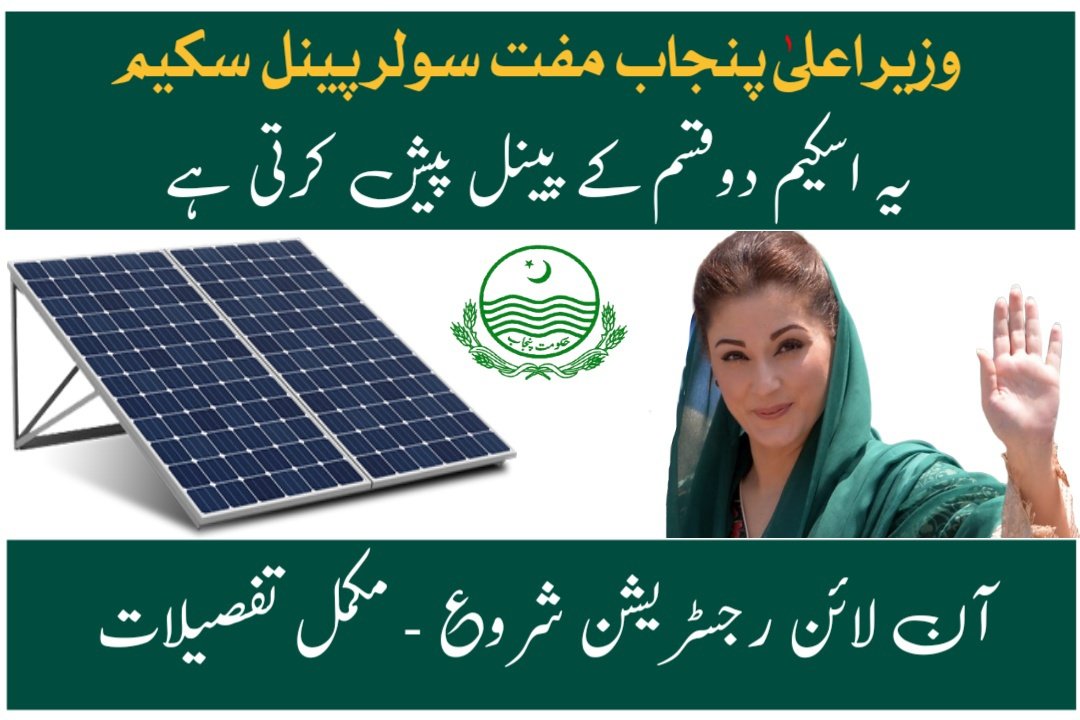The Punjab government has launched the Chief Minister Punjab Free Solar Panel Scheme to help reduce electricity costs and promote renewable energy. This scheme, initiated by Maryam Nawaz Sharif, will distribute free solar panels to 1 lakh consumers across Punjab. These panels aim to ensure reliable and affordable electricity to households consuming up to 200 electricity units monthly. Registration is now open, allowing applicants to apply through SMS or an online portal. This initiative supports low-income families by minimizing their dependence on expensive grid electricity.
| Features | Details |
| Total Panels to Distribute | 1 lakh solar panels |
| Eligible Households | Consumers using up to 200 units/month |
| Solar Panel Capacity | 2 kW maximum |
| Deadline for Registration | 5th January 2025 |
CM Punjab Free Solar Panel Scheme Details
The CM Punjab Free Solar Panel Scheme is part of a broader effort to promote renewable energy sources while addressing electricity costs. Under this program, households consuming 0-200 units monthly are eligible to receive solar panels free of cost. The scheme offers two types of panels: 550-watt solar systems for households consuming 100 units or fewer per month and 1100-watt solar systems for households consuming up to 200 units. A computerized lottery will ensure the selection process is fair and transparent.

Eligibility for Punjab Free Solar Panel Scheme
To apply for this scheme, certain eligibility criteria must be met. Consumers consuming between 0-200 electricity units monthly and having a sanctioned load of up to 2 kW are eligible to apply. Additionally, applicants must not have payment defaults or involvement in electricity theft. These conditions will ensure that the scheme only benefits deserving households. The scheme also emphasizes fairness by excluding those with multiple meters, defective meters, or outstanding payment histories.
How to Apply for Punjab Solar Panel Scheme
The application process for this initiative is simple and accessible. Eligible individuals can apply using two methods:
- Online Registration:
- Visit the official portal cmsolarscheme.punjab.gov.pk.
- Complete the registration by entering CNIC details, bill reference numbers, and contact information.
- SMS Registration:
- Send your CNIC and bill reference number to 8800 via SMS.
Both methods are user-friendly, aiming to make the registration process quick and seamless for applicants.
Benefits of the Punjab Free Solar Panel Scheme
This scheme brings many advantages for eligible households in Punjab:
- Reduced Electricity Costs: Solar energy minimizes reliance on expensive grid electricity.
- Environmentally Friendly: Promotes renewable energy usage to reduce carbon emissions.
- Reliable Power Supply: Solar energy ensures steady electricity even during outages.
- Economic Relief: Low-income households will benefit by saving on energy bills.
These benefits emphasize the program’s role in improving both financial stability and environmental conditions for families.
Application Deadline and Helpline
The last date to apply for this scheme is 5th January 2025, so applicants must submit their registration before this date. For any difficulties during registration, applicants can contact the helpline at 042-99030204. The government has provided this contact to address any technical or procedural issues related to the application process. Timely registration is essential to ensure you don’t miss this important opportunity.
Conclusion
The CM Punjab Free Solar Panel Scheme is a great step toward solving electricity-related challenges while supporting low-income families. Through free solar panels, the government aims to reduce the financial burden of expensive electricity while promoting sustainable energy usage. Eligible households should register before the deadline to ensure their participation in the program. The scheme not only offers financial relief but also ensures environmental sustainability by shifting households toward renewable energy sources.

